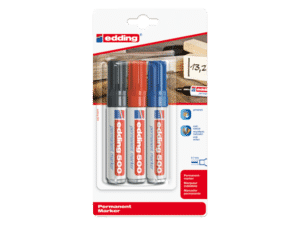Home » Blister Packs Vs Clamshells: Which Should You Choose?
Blister Packs Vs Clamshells: Which Should You Choose?
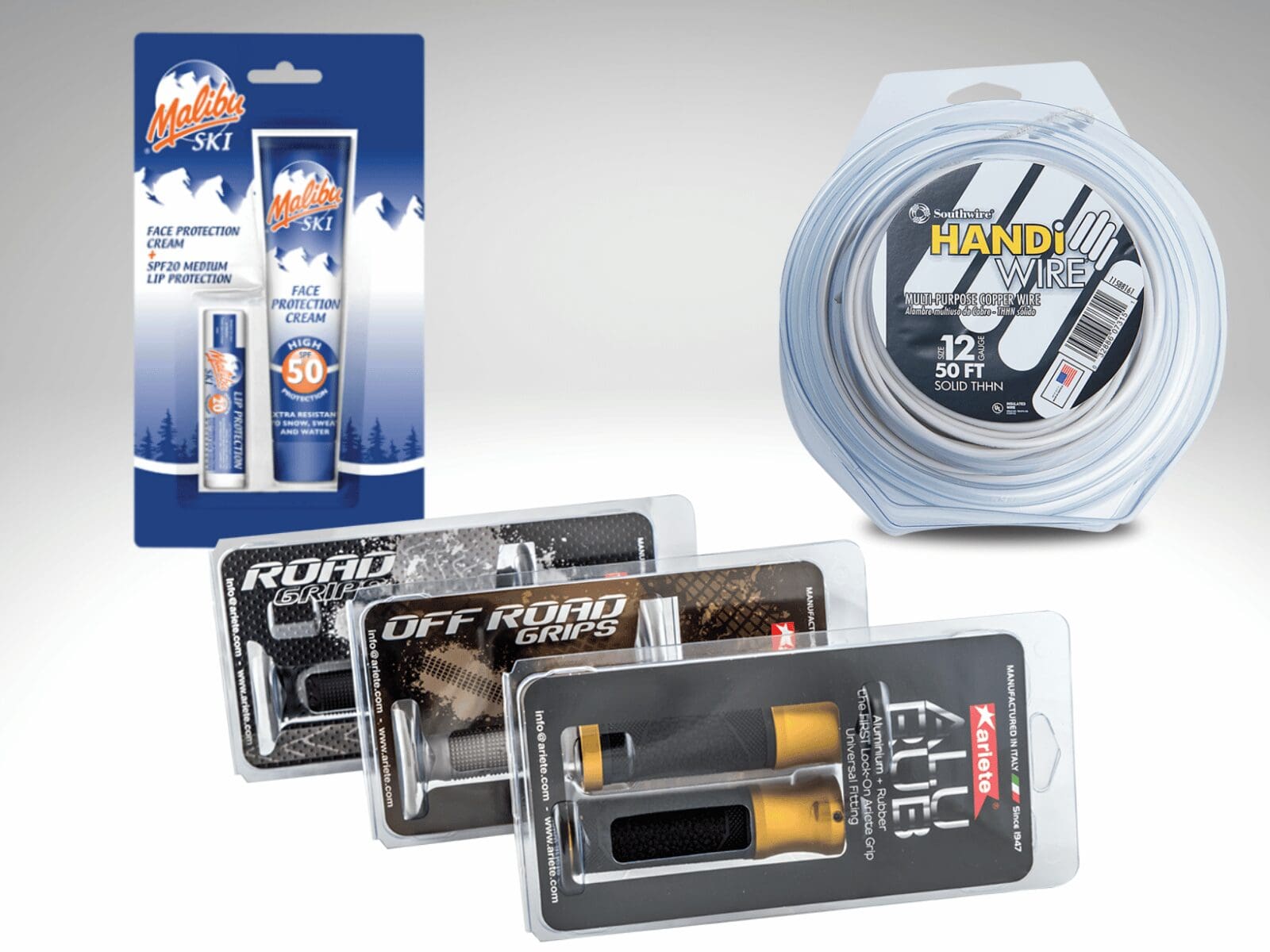
When it comes to product packaging, choosing between blister packaging and clamshell packaging can often be confusing, as they both originate from the thermoforming process and can appear quite similar on retail shelves. However, each has distinct features and benefits, making it crucial to understand their differences to make an informed decision that aligns with your product needs and packaging goals.
Understanding Blister Packs and Clamshells
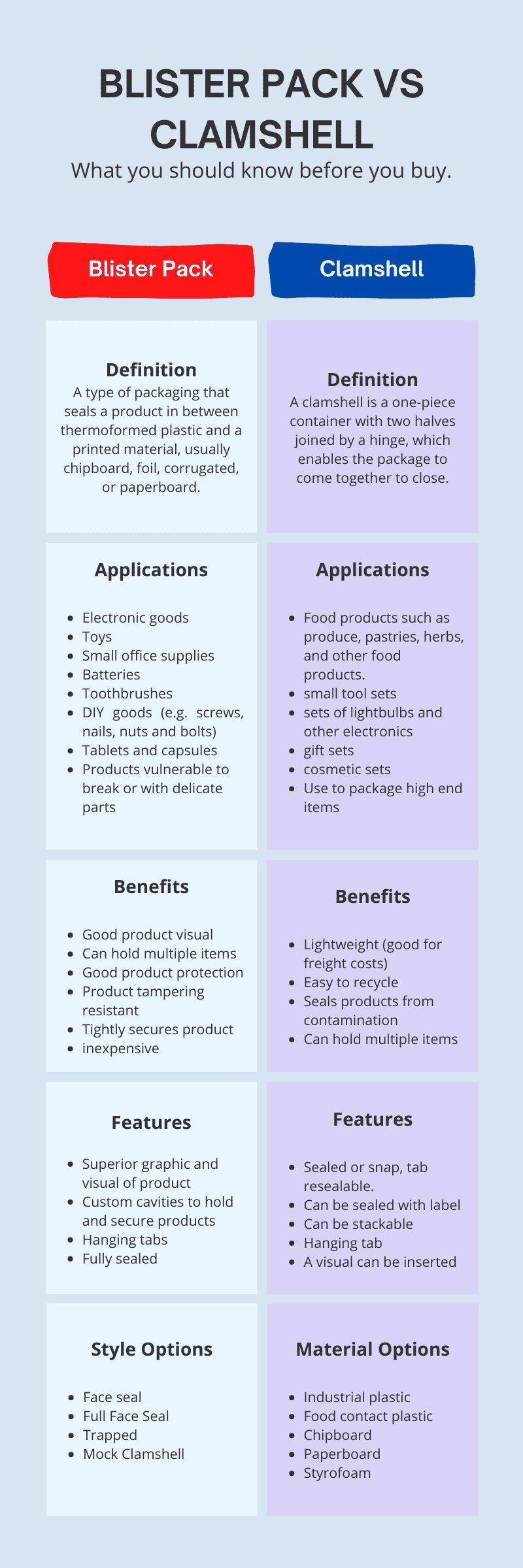
What is a Blister Pack?
Blister packs are predominantly used to encase products within a pre-formed plastic cavity, sealed against a backing material such as paperboard, foil, or plastic. This packaging is favored for its robustness and ability to clearly display the product.
Features of Blister Packs
- Custom Cavities: Tailored to snugly fit the product, ensuring it remains securely in place.
- Hanging Tabs: Often included for easy retail display.
- Sealing Options: Can be heat-sealed or cold-sealed, enhancing tamper resistance.
- Material Versatility: Available in various materials including PET, HDPE, PP, and PVC.
- Graphic Customization: Allows for the addition of logos, branding, and product information directly on the backing.
Advantages of Blister Packaging
- Product Visibility: Provides clear visibility of the product, enhancing buyer appeal.
- Tamper Evident: The sealing process helps prevent tampering and ensures product integrity.
- Cost-Efficiency: Generally less expensive on a per-unit basis, especially suitable for high-volume products.
- Consumer Trust: Consumers can view the product without opening the packaging, increasing trust and reducing the decision-making time.
Applications of Blister Packs
- Pharmaceuticals: Ideal for tablets, capsules, and other medications.
- Electronics: Protects components like batteries, earbuds, and cables.
- Consumer Goods: Suitable for small items such as toys, hardware accessories, and cosmetics.

Clamshells
Clamshell packaging consists of a single piece of thermoform plastic that hinges together to enclose the product completely. This type of packaging is resealable and provides a robust shield against external factors.
Features of Clamshells
- Snap Closures: Allows for the packaging to be securely closed and easily reopened.
- Stackability: Designed to be stacked for efficient transport and display.
- Visibility Inserts: Accommodates inserts for additional product information and branding.
- Material Flexibility: Made from a variety of plastics such as PET, HDPE, PP, and even more sustainable options like paperboard or bioplastics.
Advantages of Clamshell Packaging
- Enhanced Protection: Offers superior protection from crushing and puncturing, ideal for delicate items.
- Versatility: Can be designed to fit a wide range of product shapes and sizes.
- Consumer Convenience: Easy to open and reseal, enhancing user satisfaction.
- Brand Presentation: Offers ample space for branding and is highly customizable to fit marketing needs.
Applications of Clamshells
- Food Industry: Commonly used for fruits, salads, and bakery items.
- Retail Products: Effective for multi-component products or gift sets.
- Electronics: Provides a secure environment for gadgets, ensuring they remain free from damage.
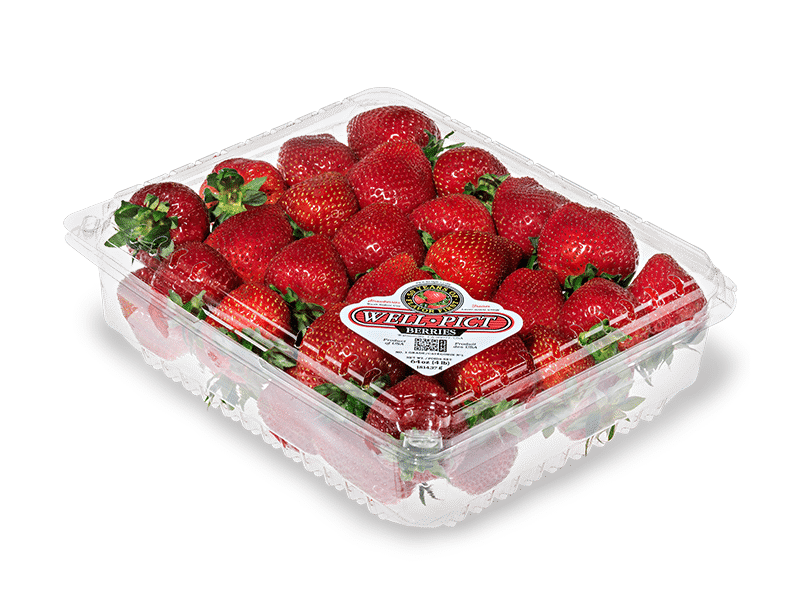
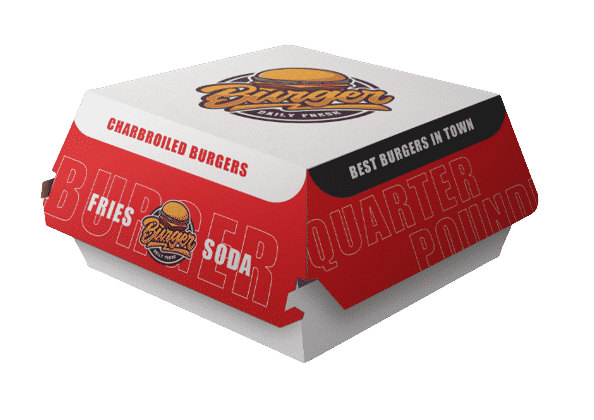
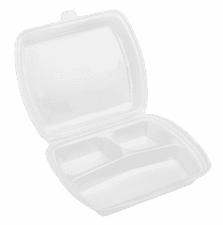
Which Should You Choose?
The choice between blister packs and clamshells should be based on specific product requirements, customer handling expectations, and marketing objectives:
- Consider Blister Packs if: You need cost-effective packaging for high-volume products where visibility and tamper resistance are key.
- Opt for Clamshells if: Your product requires robust protection, especially if it’s high-value or delicate, and you want to enhance the consumer unboxing experience.
Both packaging types can be tailored to meet the specific needs of your products, and choosing the right type can significantly impact your product’s market success.
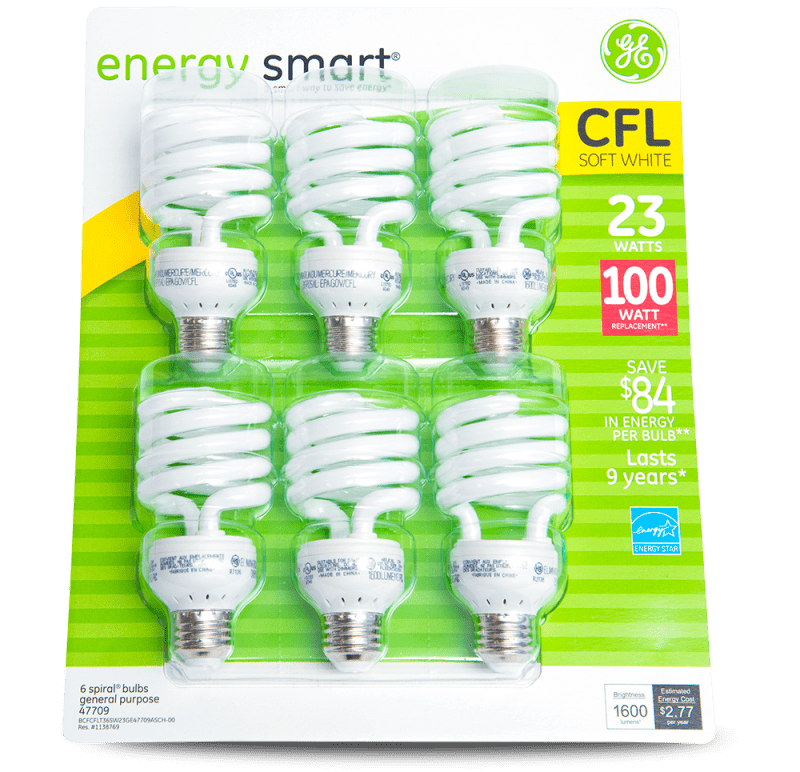
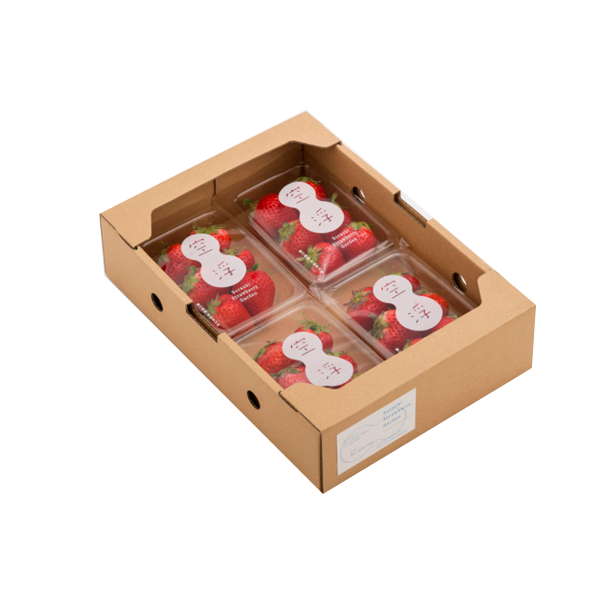
Understanding the unique properties of blister packs and clamshells is crucial for selecting the right packaging solution. Each has its own set of features, advantages, and suitable applications that can align with different product types and business goals. For expert guidance and custom packaging solutions that fit your needs, consider partnering with a specialized provider like Brown Packaging.
In the retail environment, the placement of Point of Purchase (POP) displays is just as critical as their design and content. Strategic positioning can significantly
Choosing the right foam density isn’t about “soft” versus “hard” — it’s about controlling shock transmission and matching the foam’s cushioning curve to the product’s
Moisture resistance and dimensional stability are critical performance factors for custom inserts, especially when products are shipped or stored in variable climates. Both foam and
Sustainability in pet food packaging is not just about recyclability—it’s about reducing environmental impact across the entire lifecycle. For products with high barrier needs like
Retailers place strict requirements on packaging to ensure products move efficiently through distribution centers, arrive safely, and look consistent on shelves. Non-compliance can lead to
RSC boxes dominate shipping because they combine strength with efficiency. But beyond protection, their dimensions and stacking performance directly influence freight cost, pallet utilization, and
Home » Blister Packs Vs Clamshells: Which Should You Choose?
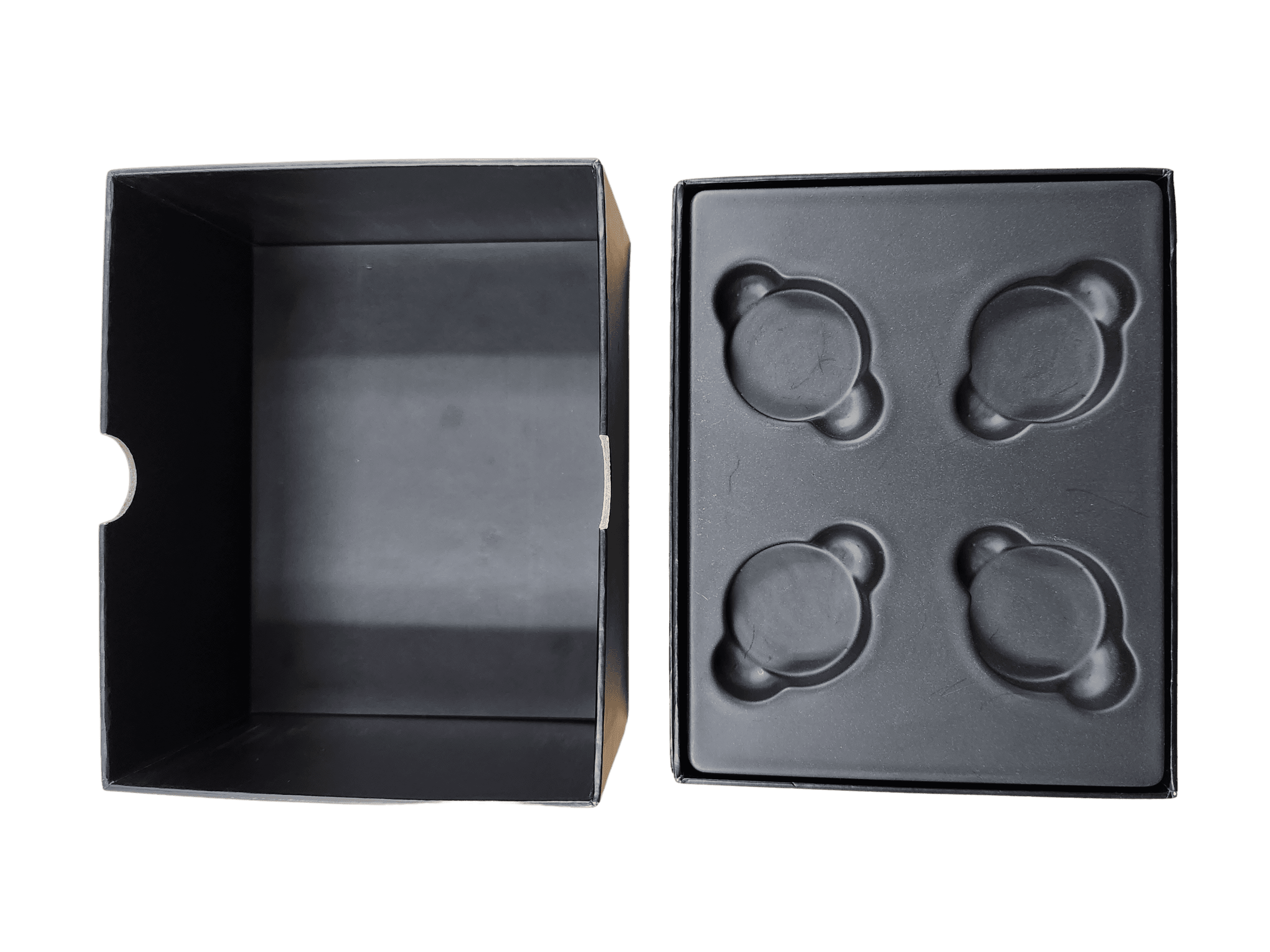
High Impact Polystyrene, commonly known as HIPS, is a versatile and widely used thermoplastic renowned for its unique blend of properties. This material is crucial
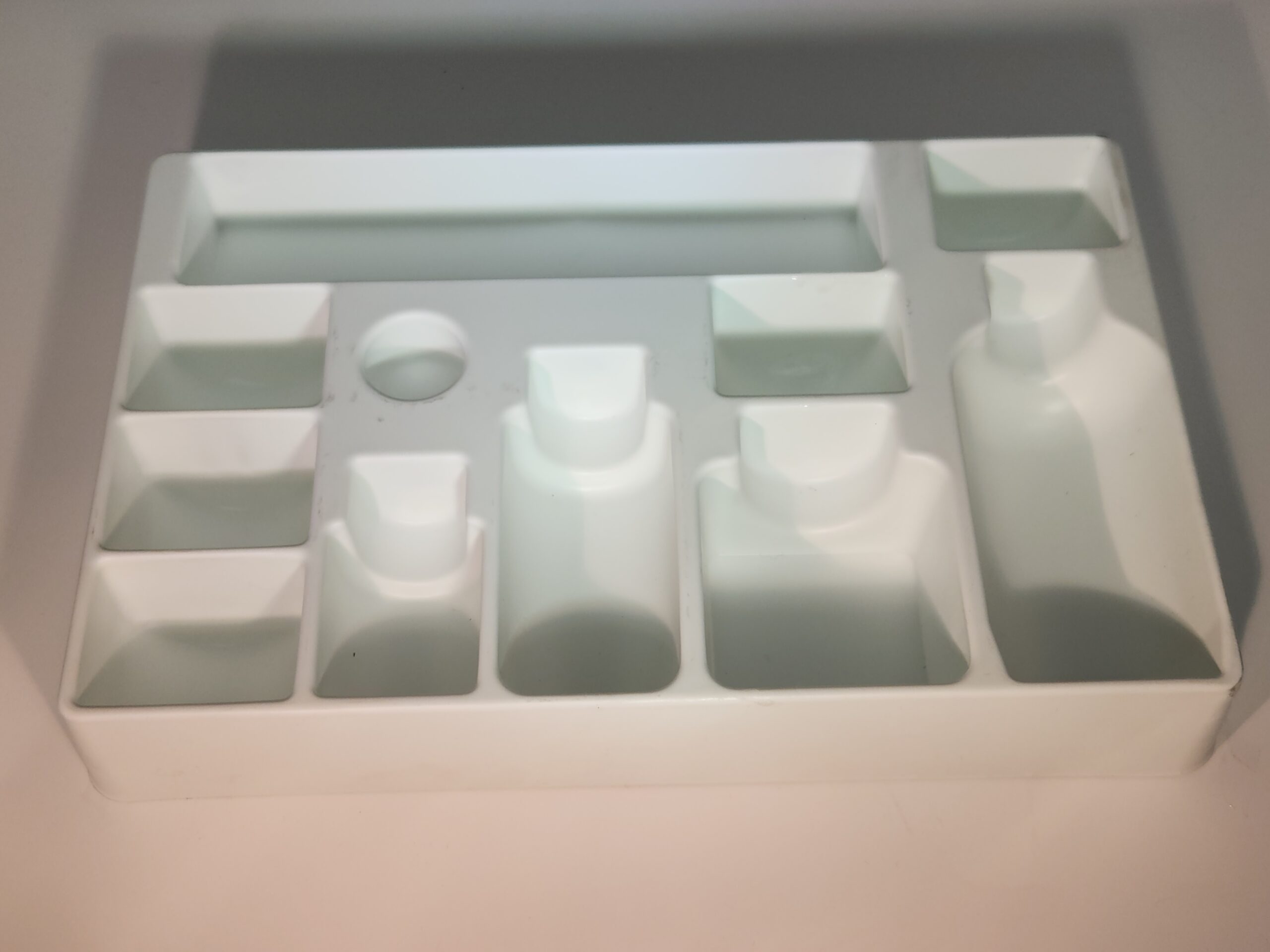
Polypropylene, often referred to as PP plastic, is the second most widely used plastic globally, praised for its remarkable durability, strength, and resistance to various
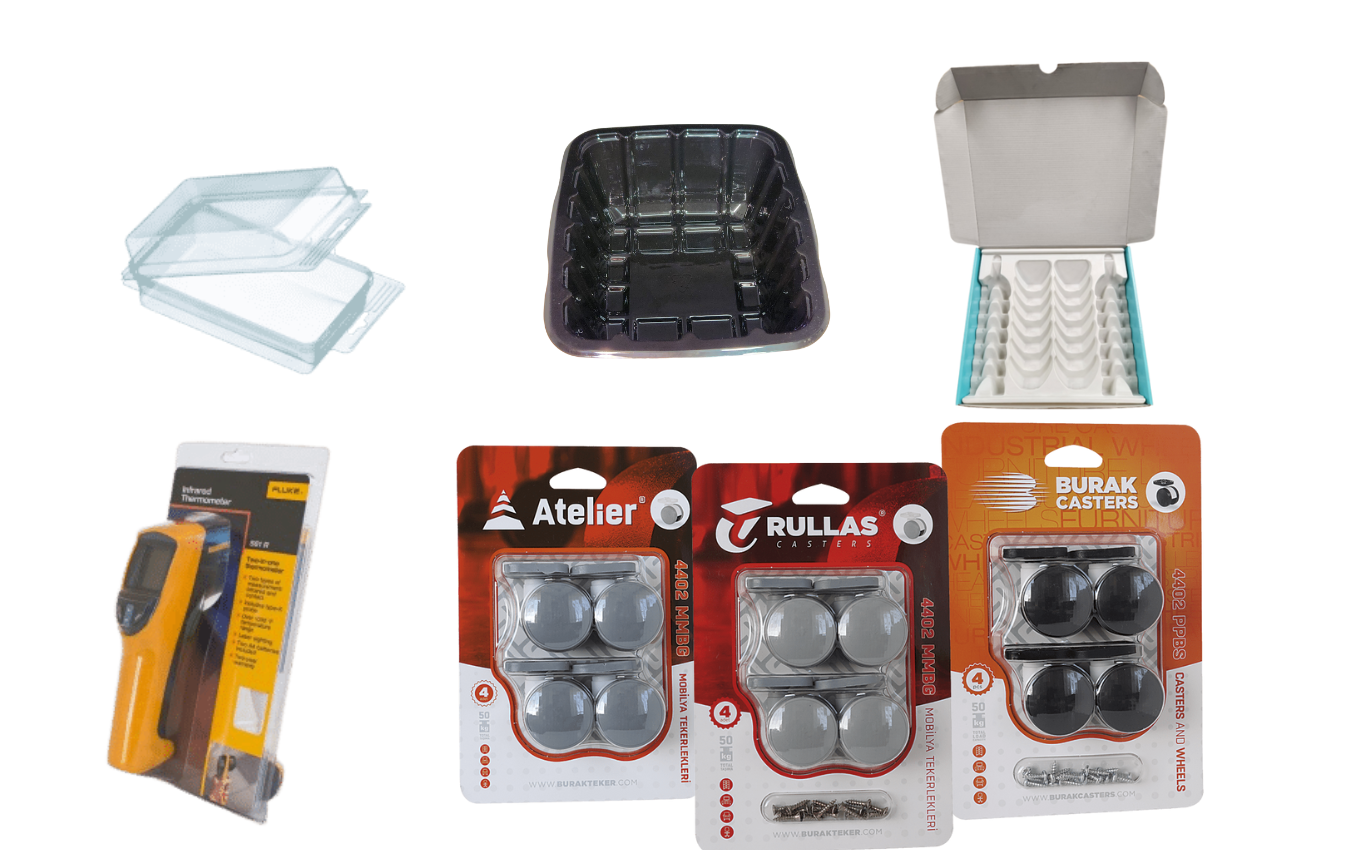
Thermoforming is a critical process in the manufacturing of diverse products, especially prominent in the packaging industry. This guide offers a detailed examination of the


